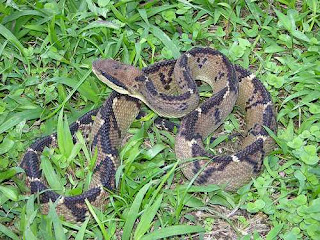The King Cobra Snake (Naja hannah, Naja bungarus, Hamadryad)
The undisputed king!
It seems that nature has given birth to this animal, with a purpose to fill the void of a king that existed in the world of snakes, and bestowed on it all that a true king should possess to rule the world with unparalleled might and courage. No one dares to question its supremacy even his peers the “ordinary cobras”. The King Cobra is fit to be a king in all respects. The word “Hamadryad is Greek meaning a nymph - which lives on a tree and dies along with the tree -adds a touch of surrealism to this animal!
Intelligent too!


Illustrations courtsey: Malcom A Smith - The Fauna of British India Vol 3
“The most intelligent of an intelligent race”; E. G. Boulenger has described this yellowish-brown king cobra or Hamadryad (Naja bungarus). It seems strange that in scientific works the name given to this animal varies from author to author whereas the name in plain English remains just the same – “King Cobra”. The most popularly used names seem to be Naja hannah and Naja bangarus. Its bite can cause death in a man within two hours, an elephant bitten on the trunk died within three hours.
A cannibal by choice!

King Cobra eating another snake Image courtsey: zoltantakacs.com
Naja hamadryad is found in Indo-China and Malaya is not just the biggest poisonous snakes in the world it is the fiercest among the venomous ones. There are records available of it growing up to 18 feet in length. The King Cobra is universally a cannibal and it has a duty in restricting the number of venomous snakes especially in some parts of Asia, they settle the problem of increase in the number of snakes simply by swallowing them! Vipers are generally avoided as the big fangs they have may cause problems when swallowed.
No spectacle!
The poison fangs are followed by three small teeth, and teeth including fangs are occasionally shed which are replaced by new ones. Eyes are of moderate size and very visible. The frontal is not truncated as in ordinary cobra. The absence of the spectacle mark on the back of the hood is a marked difference (it definitely lessens the glamour of the king to an extent!).
Not Naja naja.
The head-scales are similar to those of Naja naja, but the frontal not truncate anteriorly. A pair of large occipital shields arranged touching one to another. The cuneate scale is not present in the lower-jaw. Scales of the vertebral series are smooth and oblique and the outer two rows are larger in comparison (description courtesy Malcolm A Smith).
Up to the Himalayas!
King cobras inhabit from peninsular India to the Himalayas as well as in many parts of Indo-China sub-regions and the Andaman Islands. It has been found to live up to 6000 feet in altitude. They mainly feed upon lizards, rabbits etc but other snakes are their delicacy whether poisonous or not, no problem. There are instances where King cobras have attacked pythons and of swallowing large animals like varanus.
Builds it own nest.

King Cobra nest Image courtsey: thinkquest.org
The hemi-penis (the male reproductive organ) is fairly long and forked (a general phenomenon with snakes). Females lay about 21 to 40 eggs at a season (during April, to June) which are deposited in a “nest”. The nests are made of dry leaves and other debris and well camouflaged from onlookers. Female guard the eggs by coiling around them, male is said to be around for additional protection.
The stray princes god save them!
The young ones are black colored on the top with narrow white or yellow cross-bands. These are Chevron shaped and, pointing forwards on the front and traverse behind. With age the special coloration disappears. As it is in the case of every snake the young princes are left uncared and as soon as hatched they crawl away as if they have nothing to do with the hatching mother or the guarding father. They are the children of nature and goes in to the lap of the mother- nature either to swallow someone or to be swallowed by someone!




































